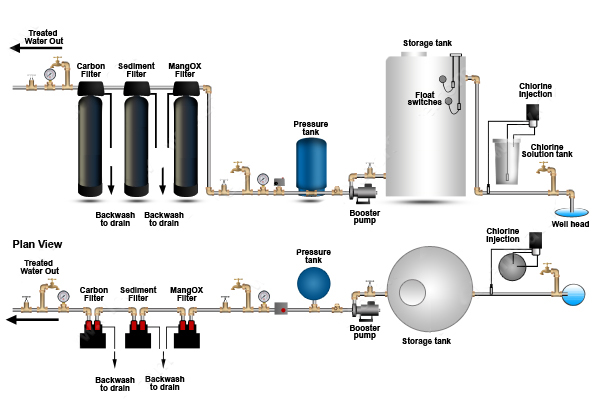Chlorination System 2
A chlorination system is an effective way to treat problem water in a rural application. Chlorination is the treatment process in which a chlorine solution is added to water to disinfect and kill bacteria, and it treats a wide array of problem water needs.
• The chlorine concentration will be adjusted by the percentage control on the chemical feed pump as required to provide proper disinfection in your water supply • Chlorine concentration injection from 0 to 16 gallons per day by the chemical feed pump — the typical setting is from 0.5 ppm to 1 ppm or higher based on the bacteria level in your water supply • Available chlorine solution tanks in 15 and 35-gallon sizes; comes with child-resistant enclosure and easy-to-read gallons/litres scale • Retention/contact tanks are required for the proper contact time that provides chlorine disinfection; usually a 120-gallon retention tank is required which allows 20 minutes of contact time at 6 gpm maximum flow • If higher flow rates are required you must add additional retention/contact tanks
• Chlorination is also used in the oxidation of iron, manganese and hydrogen sulfide impurities • The addition of chlorine to drinking water will greatly reduce the risk of waterborne diseases





